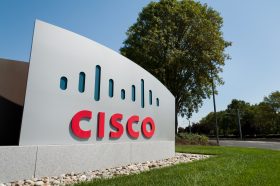Why 5G Will Drive Virtualization and Edge Compute

Futuriom spent the first four months of 2019 studying the emerging edge-compute market and how it will be driven by 5G applications and infrastructure. The findings have been published in our 5G, IoT, and Edge Compute Trends report report (free download - registration required).
Our research included a detailed look at technology options, augmented by dozens of interviews with end users, service providers, and cloud providers.
Our findings reveal that 5G will significantly benefit existing users and their suppliers and service providers, but massive bandwidth and low latency come with a price: New infrastructure will be needed to support the radio access network with smart antennas, and the core network will need new equipment, including mobile edge-compute infrastructure.
Another driver for edge computing is virtualization, as cloud computing and network function virtualization (NFV) drive down the general cost of infrastructure considerably. Rather than relying on proprietary hardware and software, operators may pro-cure commercially available off-the-shelf (COTS) equipment and place virtual in-stances of network functions on the COTS gear. The lower cost structure and greater flexibility applies to more than just traditional core network functions, as edge-compute equipment will also leverage virtualized instances of processing and storage functionality.
Highlights and Key Findings
· 5G will be a catalyst for edge-compute technology. Applications using 5G technology will change traffic demand patterns, providing the biggest driver for edge computing in mobile cellular networks.
- Low-latency apps pose numerous challenges for existing networks. Internet of Things (IoT) analytics, machine learning, virtual reality, autonomous vehicles, and other apps have new bandwidth and latency characteristics that will re-quire support from edge-compute infrastructure.
- New cloud architecture emerges. Edge computing will involve a new architecture for cloud computing infrastructure, allowing service providers to support the emergence of Ultra-Reliable Low-Latency Communications (URLLC).
- Wireless infrastructure will take time. Initial rollout of 5G and IoT support is likely to be slow. Initial use cases will be focused on fixed-wireless solutions for enterprise/industrial applications.
- Edge virtualization and data center players win. The largest opportunity for edge compute is pushing infrastructure closer to the customer using a combination of virtualization technologies and edge-compute infrastructure.
- The software-as-a-service (SaaS) model is likely to win again. Amazon, Microsoft, Google, and other leading business solution providers are likely to emerge as winners for edge-compute applications.
- New services predicted. There are longer-term opportunities for service providers in edge compute-as-a-service, as large business customers migrate to private wireless networks.
- Over-the-top (OTT) model required. Winners in the service provider community will be those that can provide value-added OTT services.
Edge Companies to Watch
Companies to watch that are included in this report: EdgeConneX, EdgeGravity (Ericsson), Edgeworx, Ericsson/Pluribus Networks (partners), MobiledgeX, Nokia/Nuage Networks, Saguna Systems, Vapor.io, VMware.
The report is FREE for registered subscribers of Futuriom. You can download the report here!






















